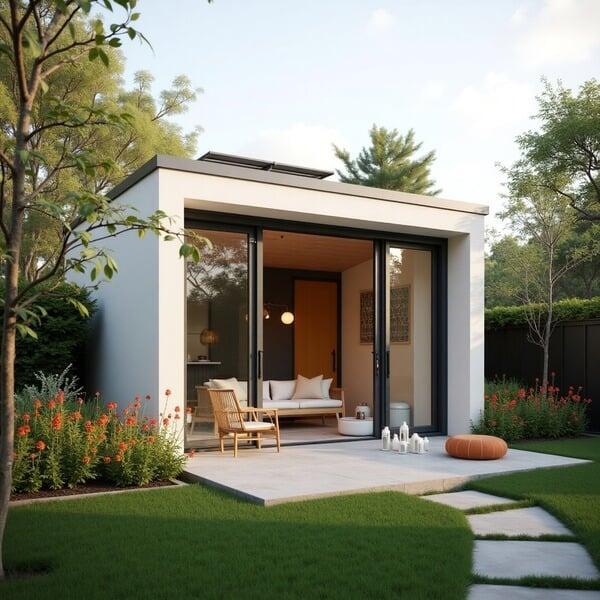| Table of Content |
| 1. What is an ADU? |
2. Benefits of Building a Permitted ADU in California |
| 3. Prefabricated vs. Custom-Built ADUs: What’s the Difference? |
| 3.1 Prefabricated ADUs (Prefab ADUs) |
| 3.2 Custom-Built ADUs |
| 4. Navigating the ADU Permit Process: Prefab vs. Customs |
| 5. Key Permit Considerations for Both Types |
| 6. Which ADU Type Is Best for You? |
6.1 Choose a Prefabricated ADU |
6.2 Choose a Custom-Built ADU |
| 7. FAQ |

Benefits of Building a Permitted ADU
Investing in a permitted ADU offers long-term value and legal peace of mind:
✅ Generate Legal Rental Income
✅ Boost Property Value
✅ Support Multigenerational Living
✅ Avoid Fines and Legal Trouble
✅ Access Financing and Insurance
Permitted ADUs are compliant with both state and local regulations, making them more secure and valuable than unpermitted structures.
Prefabricated vs. Custom-Built ADUs: What’s the Difference?
🔹 Prefabricated ADUs (Prefab ADUs)
Prefabricated ADUs are factory-built housing units, delivered and installed on-site. These include modular, panelized, or container-style ADUs. They are pre-designed and often come as part of a streamlined, bundled package.
🔹 Custom-Built ADUs
Custom-built ADUs are designed and constructed from scratch on-site based on homeowner preferences, architecture, and site-specific requirements. These allow for full customization and integration with existing property aesthetics.
Navigating the ADU Permit Process: Prefab vs. Custom
While both prefab and custom-built ADUs must go through permitting, the process, timeline, and complexity differ. Here’s how:
| Category | Prefabricated ADUs | Custom-Built ADUs |
|---|---|---|
| Design Flexibility | 🔸 Limited to manufacturer’s models | ✅ Fully customizable design |
| Permit Timeline | ✅ Often quicker due to pre-approved plans | 🔸 Can take longer due to complex site-specific design |
| Permit Submission | ✅ Provider often handles submittals | 🔸 Homeowner or architect manages process |
| Foundation & Site Work | 🔸 Requires separate grading and foundation permits | ✅ Integrated into the full construction plan |
| Cost Predictability | ✅ More predictable fixed costs | 🔸 Higher variance based on finishes, materials, and labor |
| Building Code Compliance | ✅ Built to CA residential code in factory | ✅ Built on-site to meet all code standards |
| Zoning Compatibility | ✅ Easier in cities familiar with prefab units | 🔸 Requires local review and adaptation |
| Speed to Completion | ✅ Faster (as little as 3–5 months) | 🔸 Typically 6–12+ months |
Key Permit Considerations for Both Types
Regardless of the method, California lawrequires the following for all ADUs:
Zoning Compliance: Your lot must allow ADUs under state/local rules.
Building Permit: You must submit architectural plans for approval.
Site Plan: Includes layout, setbacks (minimum 4 ft), and access.
Utility Connections: Sewer, water, and electricity must meet code.
Title 24 Energy Compliance: Required for all new residential construction.
Which ADU Type Is Best for You?
✅ Choose a Prefabricated ADU if:
You want a faster build timeline
You’re looking for an all-in-one solution
You have a flat, accessible lot
You prefer lower, more predictable costs
✅ Choose a Custom-Built ADU if:
Your property has unique constraints or terrain
You want full control over design and materials
You’re integrating the ADU with an existing structure
You’re building for high-end resale or architectural value

